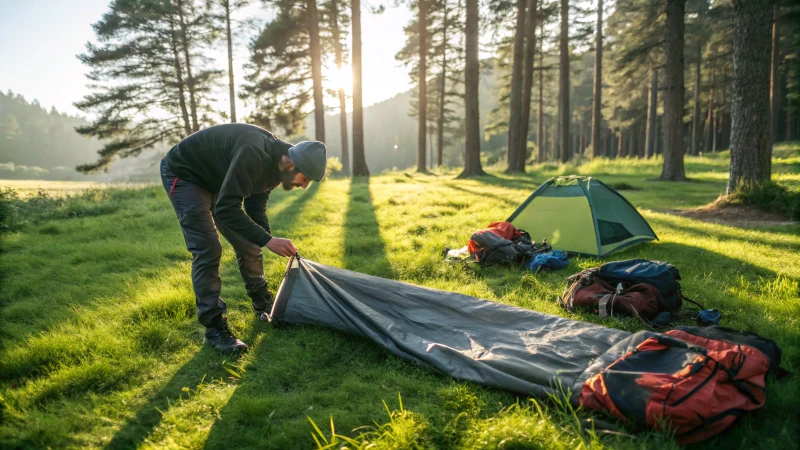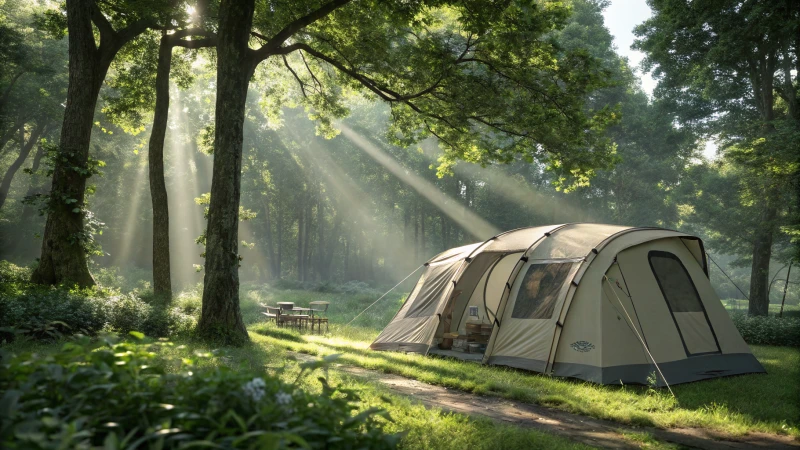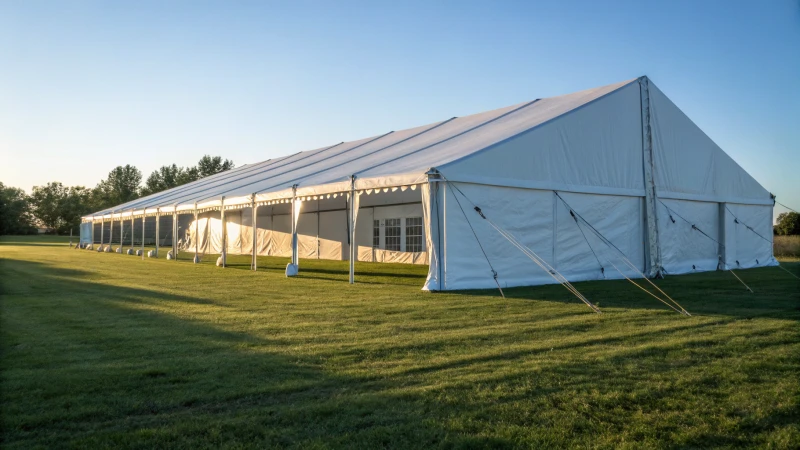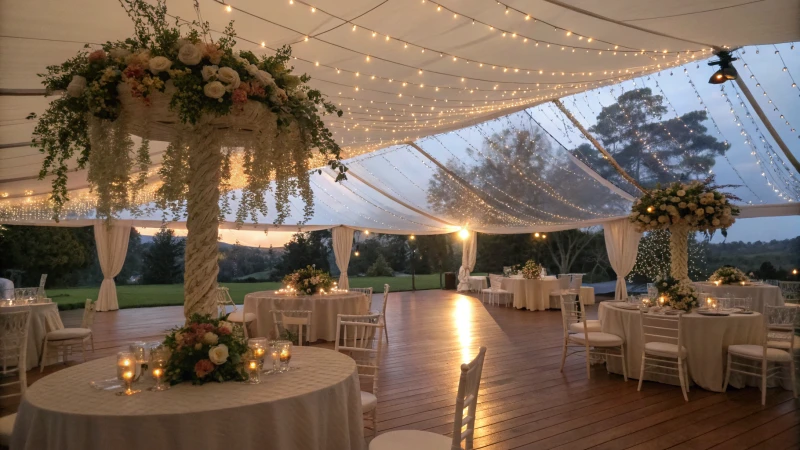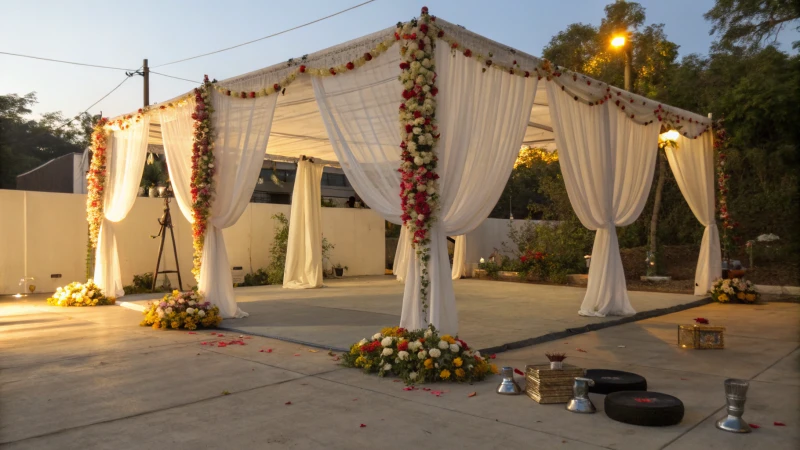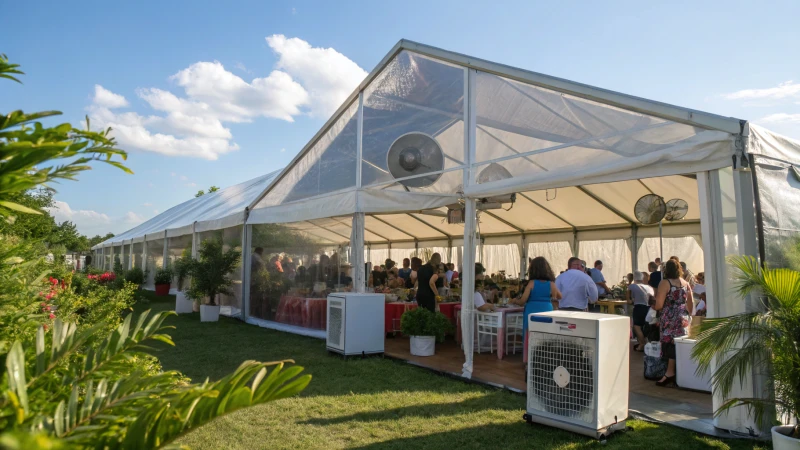
Picture this: a sun-drenched day, laughter, music, and a beautiful tent buzzing with energy.
To cool a large outdoor event tent effectively, use techniques like improving ventilation, adding portable air conditioning, selecting reflective materials, and installing fans or misting systems. These solutions ensure guests stay cool and enjoy the event without discomfort from the heat.
I remember hosting my first big outdoor event. It was midsummer, and the heat was relentless. I quickly learned that keeping the tent cool was crucial not just for comfort but for the overall vibe of the gathering. A little creativity went a long way—from borrowing industrial fans to strategically setting up portable AC units.
Ventilation became my best friend; opening side panels whenever a breeze passed by was a game-changer. Reflective tent materials also worked wonders, deflecting the sun’s rays and helping us manage the temperature inside. And let’s not forget those misting systems; they were the unexpected hit of the party, keeping everyone refreshed and happy. Each of these strategies can be tailored to your specific event needs, ensuring your guests have a blast without breaking a sweat.
Portable air conditioning is the most effective cooling method.False
While effective, portable AC may not be the best due to cost and logistics.
Reflective tent materials reduce heat absorption significantly.True
Reflective materials deflect sunlight, keeping the tent cooler inside.
How Can Ventilation Enhance Tent Comfort?
Remember that one camping trip where the tent felt like a sauna? It doesn’t have to be that way!
Ventilation enhances tent comfort by promoting airflow, reducing humidity, and preventing condensation. It allows hot air to escape and fresh air to circulate, creating a cooler and more pleasant environment inside the tent.

The Importance of Ventilation
I’ve learned from experience that proper ventilation can make or break a camping trip. Picture this: you’re nestled in your sleeping bag, but instead of feeling cozy, you’re wrestling with dampness and stuffiness. Ventilation regulates temperature, reduces humidity, and prevents condensation1 buildup. And trust me, avoiding that uncomfortable dampness not only improves sleep quality but also helps keep mold at bay.
Natural Ventilation Techniques
One trick I picked up is using the natural breeze to your advantage. Set up your tent with the doors and windows facing into the wind. It might sound like a small detail, but it makes a huge difference in airflow. Don’t forget to keep those built-in vents open! They let hot air escape while pulling in fresh air, creating a refreshing cross breeze.
| Ventilation Tip | Description |
|---|---|
| Face Openings to Wind | Position doors/windows towards prevailing wind. |
| Utilize Built-in Vents | Keep vents open for continuous air circulation. |
| Adjust Flysheet Height | Raise the flysheet to let warm air escape from the top. |
Mechanical Ventilation Solutions
For larger tents or when Mother Nature’s breeze isn’t enough, mechanical solutions come in handy. I’ve seen how battery-operated fans or solar-powered ventilation systems can transform a stifling tent into a cool haven. Placing these fans strategically can enhance airflow and make even the hottest days bearable inside tents2.
- Battery-operated Fans: Portable and easy to position for targeted cooling.
- Solar-powered Systems: Sustainable option utilizing solar panels.
Preventing Humidity and Condensation
High humidity can turn your tent into a sauna. To combat this, I always pack moisture absorbers like silica gel packets. And here’s a tip from experience: avoid setting up camp in low areas where water tends to gather. This way, you can keep your tent dry and comfortable.
By incorporating these strategies, I ensure my tent remains a cool and inviting retreat during outdoor adventures. For more insights on managing tent humidity3, dive deeper into practical tips that can truly enhance your camping experience.
Ventilation helps regulate tent temperature.True
Proper airflow reduces heat buildup, keeping the tent cooler.
Condensation in tents promotes mold growth.True
Moisture from condensation creates an environment conducive to mold.
What Are the Benefits of Using Portable Air Conditioners?
Ever wished you could take your air conditioner with you, like a trusty sidekick ready to combat the summer heat? Well, portable air conditioners might just be your new best friend!
Portable air conditioners offer convenient cooling with easy setup, mobility, cost savings, and energy efficiency. They’re perfect for cooling individual spaces where traditional systems aren’t feasible.

Easy Installation and Mobility
Let me tell you about the time I moved into a tiny apartment during one of those sweltering summers. The thought of installing a traditional window AC unit felt like scaling Everest. That’s when I discovered portable air conditioners. These marvels require no permanent fixture, just a nearby window or vent for the exhaust hose. I could move it from my cramped living room to my makeshift office without breaking a sweat.
For renters like me or anyone in a space where drilling holes isn’t an option, this mobility is a game-changer. Think of high-rise apartments with window restrictions—portable ACs are your knight in shining armor.
Cost-Effectiveness and Energy Efficiency
Once upon a particularly muggy July, I realized my electric bill was climbing higher than the temperatures outside. That’s when I learned that portable air conditioners could help lower energy costs. Instead of cooling an entire building, you can target just the rooms you’re using. This revelation saved me a small fortune.
Plus, many models boast energy-saving features like timers and sleep modes. Picture this: your AC quietly shutting off after you’ve dozed off, saving power and money while you dream away.
Versatility and Additional Features
Beyond cooling, these units often moonlight as dehumidifiers or fans. I once hosted a gathering during a humid spell, and my portable AC doubled as a dehumidifier, making the atmosphere much more comfortable.
And let’s not forget the modern tech perks! With smart features, you can adjust settings remotely via an app or voice control, ensuring that perfect chill awaits you upon arrival.
| Feature | Description |
|---|---|
| Mobility | Easy to move between rooms without permanent installation |
| Cost-effectiveness | Lower energy costs by cooling only occupied spaces |
| Energy efficiency | Features like timers and sleep modes for reduced consumption |
| Versatility | Includes additional functions like dehumidification and fan use |
| Smart technology | Control via apps or voice commands for convenience |
For anyone seeking an adaptable and effective cooling solution, portable air conditioners blend affordability with user-friendliness and versatility across different environments. Dive into our comprehensive guide4 to explore specific models and their unique features.
Portable ACs require permanent installation.False
Portable ACs are designed for easy, non-permanent installation.
Portable ACs can lower energy bills.True
They cool specific areas, reducing overall energy consumption.
Why is the right tent material crucial for staying cool?
Choosing the right tent material is like picking the perfect summer outfit—it can make or break your experience in the heat.
The material of a tent is vital for cooling because it affects how heat is absorbed and released. Reflective and breathable fabrics are ideal as they deflect sunlight and allow for better ventilation, keeping the interior cooler.

Reflective Materials: The Unsung Heroes
Imagine this: you’re setting up camp on a blazing hot day, and the sun is relentless. That’s where reflective materials come to the rescue. I once used a tent with an aluminum coating5, and it was like having a personal shade. It deflected those scorching rays, making a world of difference inside. Reflective materials are a godsend, especially when the sun is at its zenith, making sure your tent remains a sanctuary from the outside heat.
| Tent Material | Cooling Effect | Usage |
|---|---|---|
| Reflective | Deflects sunlight | Daytime |
Breathing Easy with Breathable Fabrics
I learned the hard way on a sweltering summer night that not all tents are created equal when it comes to ventilation. A tent made with polyester mesh6 turned out to be my saving grace. It allowed just enough airflow to whisk away the heat, without inviting any pesky bugs in. Having that gentle breeze flow through made my evening under the stars pleasantly cool.
| Tent Material | Cooling Effect | Usage |
|---|---|---|
| Breathable | Enhances airflow | All-day |
Insulation and Shade: More Than Just Protection
Insulation isn’t just for cold nights—it can keep your tent cool during the day, too. I recall using a tent with thick canvas walls that provided a buffer against the intense heat. Adding external shades or tarps can also be a game-changer, especially when natural shade is scarce. I’ve even set up makeshift shades using blankets tied to trees—a bit makeshift, but incredibly effective.
Consider using materials like thick canvas7 which help stabilize internal temperatures by minimizing heat penetration.
Embracing Technological Advances
The latest in tent technology feels like something out of a sci-fi movie. Some tents now incorporate phase-change materials8 that actively manage temperature by absorbing and releasing heat. It’s like having an intelligent climate control system right at your campsite. These innovations are fantastic for unpredictable weather patterns, giving you one less thing to worry about when you’re out in nature.
Reflecting on these experiences, I realize that choosing the right tent material isn’t just about comfort—it’s about crafting an enjoyable outdoor adventure, even when the sun is blazing.
Reflective tent materials reduce heat buildup.True
Reflective materials deflect sunlight, lowering internal temperatures.
Breathable fabrics block airflow in tents.False
Breathable fabrics enhance airflow, aiding in cooling the tent.
How Do Fans and Misting Systems Work Together?
I remember the first time I felt the perfect blend of a fan and misting system—a real game-changer on a scorching summer day.
Fans and misting systems work together by circulating cooled air through mist evaporation. The fans spread the mist, enhancing the cooling effect and reducing humidity, creating a comfortable environment even in the hottest conditions.

The Science Behind Cooling
The magic behind these systems is all about creating a mini climate oasis. I’ve experienced this firsthand when setting up for an outdoor event—watching tiny droplets turn into a refreshing breeze was like witnessing science in action. Misting systems release these fine water droplets that evaporate quickly, soaking up heat from the air around them—this is evaporative cooling9 at work. Throw a fan into the mix, and you’ve got an airflow booster that speeds up evaporation and spreads that cool goodness everywhere.
How They Complement Each Other
Let me tell you, fans and misting systems are like the dynamic duo of cooling. When I first used just fans, sure, they moved the air around, but it wasn’t until I added misting that I felt a real temperature drop. Fans alone can’t do much more than stir things up, but combine them with misting systems, and you can cut through the heat without leaving everything damp. It’s all about balance:
| Feature | Fans | Misting Systems |
|---|---|---|
| Air Circulation | Enhances air movement | Limited without fans |
| Temperature Reduction | Minimal | Significant via evaporation |
| Humidity Control | Reduces moisture build-up | Can increase humidity |
Practical Applications
In my experience, setting these up at outdoor events or even just a backyard BBQ has been a lifesaver in dry heat. You place fans strategically to catch the breeze, then position misting nozzles where they’ll cover the area evenly. It’s like setting up your personal cooling crew. I’ve learned that larger spaces might need multiple setups, while small areas can be cooled with portable units. And don’t forget to use timers or sensors to keep humidity in check without overdoing it.
Technical Considerations
I’ve found that high-pressure pumps are key to getting those fine mist droplets that evaporate fast—leaving surfaces dry but cool. It’s like using a magic wand! Proper filtration is another must-have; otherwise, nozzles can clog and mess up your cooling game. Planning this setup took some effort, but once you understand how fans and misting systems complement each other, creating a cool zone even in blazing heat becomes second nature.
Fans alone significantly reduce air temperature.False
Fans circulate air but do not significantly change the temperature.
Misting systems can increase humidity levels.True
Misting systems add moisture, potentially increasing humidity if unmanaged.
Conclusion
Effective cooling strategies for large outdoor event tents include improving ventilation, using portable air conditioning, reflective materials, and misting systems to ensure guest comfort during hot weather.
-
Learn about the effects of condensation in tents and how it impacts comfort and longevity. ↩
-
Discover the top portable fan options for improving airflow in tents. ↩
-
Explore effective methods to control humidity levels in your tent for a more pleasant stay. ↩
-
Explore top-rated models to find one that suits your needs for efficient cooling and additional features like smart technology. ↩
-
Discover how aluminum coatings on tent materials can reduce heat absorption and enhance cooling efficiency. ↩
-
Learn why polyester mesh is ideal for tents needing enhanced ventilation and cooling. ↩
-
Explore how thick canvas materials provide effective insulation and cooling benefits. ↩
-
Understand how phase-change materials can regulate tent temperatures effectively. ↩
-
Learn how evaporative cooling works to understand why misting systems are effective in lowering temperatures. ↩



